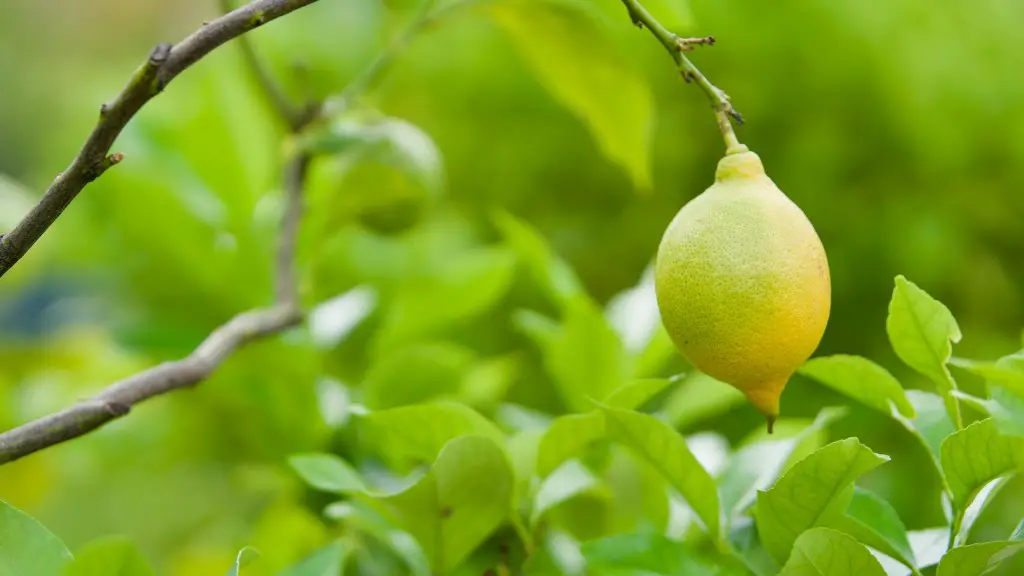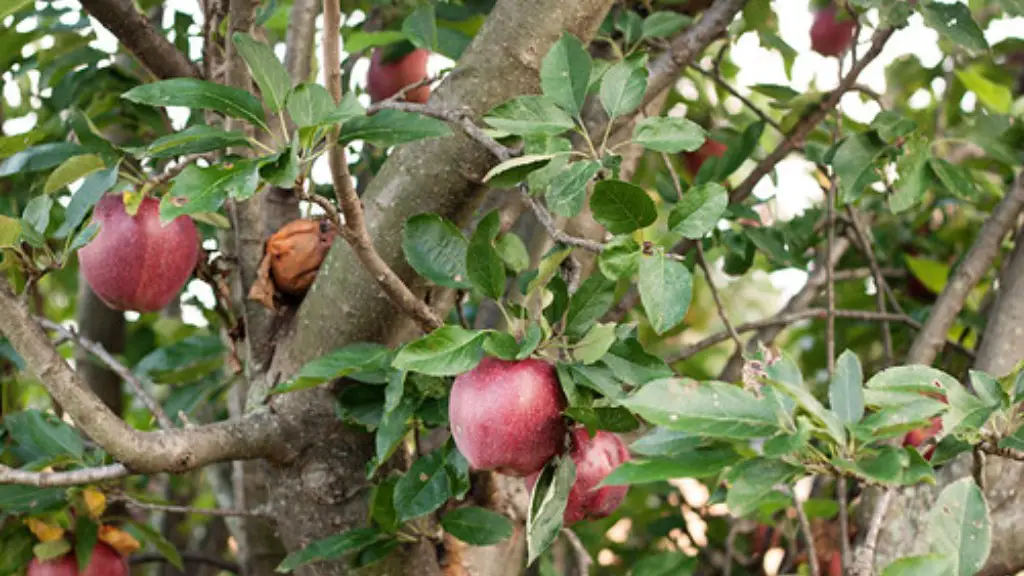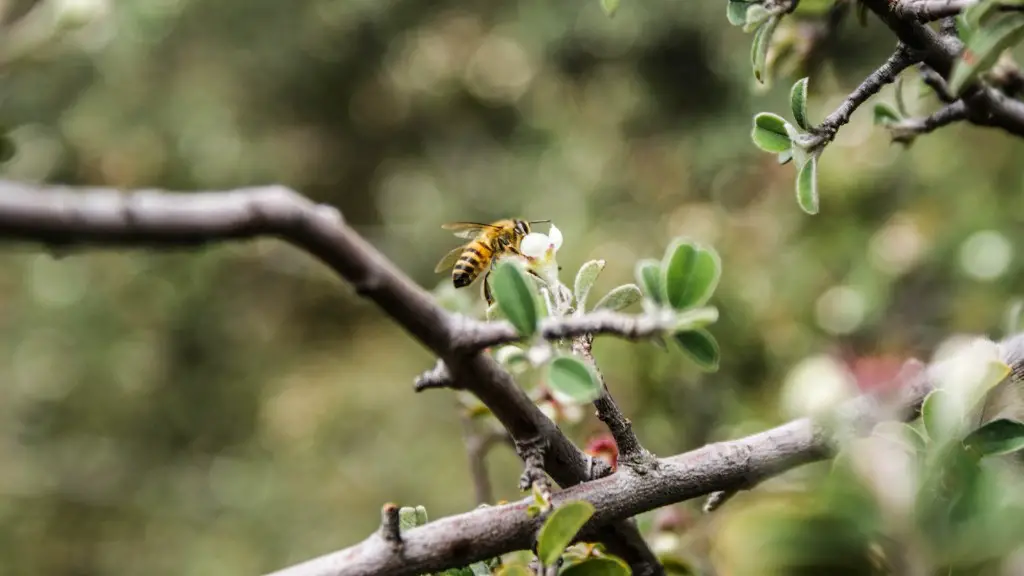Espaliering a lemon tree is an effective way to increase the yield of a lemon plantation in a limited space. It involves training the citrus branches in a horizontal fashion horizontally against supports such as trellis and walls, as well as guiding and controlling the growth of the tree. It takes some time and dedication but it does produce excellent results. Here’s how to do it.
First, identify the type of wall or trellis that you will be using to support the lemon tree branches. Select a wall with good insulation so that sunlight and wind can’t blow through it easily, or use an appropriate trellis. Prepare the wall or trellis. If you’re using wall supports, secure a suitable batten or plastic sheet across it. If you’re using a trellis, secure the trellis carefully across the wall and make sure there is a strong framework.
Now it’s time to start training the branches of your lemon tree. Tie the main branch to the wall or trellis using a non-abrasive material, such as plastic-coated wire or something similar. Tie the upper branch eight inches above the lower one. Make sure that the knots are tight and the wires are held in place firmly.
Continue training the branches of your lemon tree. Arrange the other stalks in tiers, taming the shoots and tying them securely to the support. Gently spread and arrange the branches as you move down the wall. Make sure to evenly space branches around the tree and encourage the growth of the fruiting branches from the second tier upwards. If possible, increase the number of tiers as you reach closer to the ground.
Maintain and prune your lemon tree regularly. This involves removing any weak and crossing branches, as well as dead, diseased and damaged citrus fruits. Always use sharp and clean secateurs and cut back to the parent stem of the branch. You can also prune to encourage fresh growth and to create a more even shape.
Finally, keep your lemon tree adequately watered and fertilised. Build up the soil around its rootstock and mulch the soil to a depth of four inches to help retain moisture and prevent weeds from growing. Water it every day and feed it with a citrus-friendly fertiliser. Monitor the tree for signs of disease or pest activity and take the necessary steps to keep the tree healthy.
Pruning for Growth and Shaping
When it comes to espaliering your Lemon tree, pruning is one of the most important steps. Pruning can help to encourage more growth and create more berries, as well as shaping and maintaining the tree’s structure. The branches should be regularly checked and pruned back to the main stem where necessary. Pruning should be done carefully and strategically to ensure that only healthy wood is cut away.
To prune your Lemon tree, start by identifying any diseased, dead or damaged branches. These should be removed immediately to avoid any further damage or spread of disease. After that, any weak or crossing branches should also be removed. Also, prune crossing branches to improve light penetration and promote better fruit production.
It’s best to use sharp and clean secateurs when pruning. Make sure to prune back the branches to the parent stem in order to encourage the new growth of the lemon tree. Prune during the summer season for better results, as this is the best time for encouraging the plant’s growth. Monitor your Lemon tree regularly to ensure it is in good shape.
Fertilizing for Maximum Yields
Fertilizing is an important step to ensuring that your Lemon tree yields the maximum number of fruits. Fertilizers should be chosen according to the tree’s current state and needs. For example, potassium-rich fertilizers can help the tree to produce more flowers, thus increasing the number of fruits produced.
The frequency of fertilizing will depend on the type of soil and climate. Fertilizers should be applied regularly during the growing season, such as in spring and summer. It is best to use an organic fertilizer if the climate permits, as this will help to improve the quality of the soil. However, if the soil is poor and does not hold much nitrogen, a synthetic fertilizer can be used.
When applying the fertilizer, make sure that it is spread over the entire root system, not just the root ball. Follow the directions on the fertilizer carefully so that you do not apply too much or too little fertilizer. Finally, make sure to water the tree after fertilizing to ensure that the nutrients are absorbed into the soil.
Watering and Mulching
Watering and mulching are essential steps in ensuring the health of your espaliered Lemon tree. Watering should be done on a regular basis and should be determined according to the weather, the soil type and the climate. The soil should be monitored regularly to check for dryness or saturation before applying water. Too little or too much water can lead to serious problems for the tree.
Mulching is also an important step in keeping the Lemon tree healthy. Mulching will help to retain moisture and keep the soil cool by preventing the sun’s rays from reaching the roots. It will also help to prevent weed growth and help to reduce soil compaction. Mulch should be applied to a depth of four inches around the tree and should be refreshed yearly.
Pest Control
It is important to keep an eye out for pests and diseases that could harm your Lemon tree. Citrus trees are vulnerable to pests such as aphids, thrips, scale and mealybug, as well as diseases such as citrus canker and citrus blight. If and when pests or diseases are spotted, the necessary steps must be taken to eradicate them.
Pesticides can be used to control certain pests. However, they should only be used as a last resort and should be chosen carefully according to the species of pest. Natural pest control options, such as pheromone traps, can also be used to control pests. If the pest attack is too severe, then it may be best to destroy the affected tree in order to prevent the pests from spreading to other trees.
It is also important to monitor the tree for signs of nutrient deficiencies. Soil testing can help to determine the exact nutrient profile of the soil, which will enable you to supplement with the necessary fertilizers. If the nutrient levels are unbalanced, then the tree may become vulnerable to pests and diseases.
Harvesting
When the time comes to harvest the lemons, it is important to do so carefully and with patience. If the lemons are too ripe, they may not have a good flavor and texture. Gently twist the lemons to remove them from the branches. Lemon trees can produce up to 200 fruits per season, but this number may vary depending on the variety of the tree.
It is important to pick the lemons at the right time of their ripening cycle. It is best to pick the fruit when they have a yellow tinge; over-ripe fruit will have a greenish tinge. Once picked, the lemons should be stored in a cool, dry place in order to maximize their shelf life. Ripe lemons can be stored for up to two weeks. Unripe lemons, however, can last up to six weeks.




